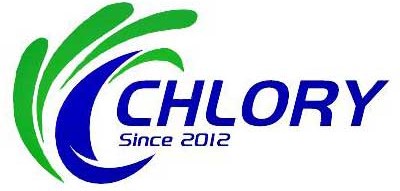Shellfish, such as oysters, clams, and scallops, are highly valued for their delicious flavor and rich nutritional value. However, as filter-feeders, they are susceptible to accumulating bacteria, viruses (such as norovirus), and other microorganisms in seawater. Improper handling can pose a food safety risk. Therefore, shellfish purification is crucial to ensuring their safety for consumption. Traditional purification methods have numerous limitations, but hypochlorous acid water, combined with modern technology, particularly when produced on-site using Chlory hypochlorous acid generators, is becoming a revolutionary solution.
Why Do Shellfish Need Purification?
Shellfish ingest food by filtering large quantities of seawater. During this process, if pathogenic microorganisms (such as E. coli and Vibrio spp.) are present in the waters where they grow, these pathogens can accumulate in their bodies, particularly in their digestive glands. Consuming unpurified shellfish, especially raw or undercooked, carries a high risk of food poisoning. The purpose of shellfish purification is to place harvested shellfish in a clean, controlled water environment, allowing them to naturally excrete pollutants and reach safe standards for consumption.
Hypochlorous Acid Water: An Ideal Shellfish Purification Disinfectant
Hypochlorous acid is a naturally occurring, powerful oxidant, a core substance used by white blood cells in the human immune system to kill pathogens. When used in shellfish purification, it exhibits significant advantages:
- Highly Efficient and Broad-Spectrum Bactericidal Ability: Hypochlorous acid is significantly more effective than traditional sodium hypochlorite (ordinary bleach). It rapidly penetrates microbial cell walls, disrupting their structure and providing excellent bactericidal effects against bacteria, viruses, and fungi, effectively reducing the risk of norovirus and Vibrio.
- Extremely Safe: Hypochlorous acid decomposes into water upon reaction, leaving no harmful byproducts (such as chloramines or trihalomethanes) and no residual toxicity. It is safe for shellfish and does not affect their flavor or freshness.
- Non-corrosive, mildly neutral: Unlike strongly alkaline sodium hypochlorite, high-quality hypochlorous acid water is weakly acidic to neutral, minimizing corrosion to purification equipment, pipes, and tanks, extending equipment life.
Chlory Hypochlorous Acid Generator: Achieving "Ready-to-use" Best Practices
The effectiveness of hypochlorous acid water for shellfish decontamination depends heavily on the purity and stability of the solution. The Chlory hypochlorous acid generator uses electrolysis technology, using only sodium chloride (NaCl) and water, to instantly generate high-purity, stable hypochlorous acid water on-site. This approach perfectly meets the needs of shellfish decontamination:
- Easy to operate and manageable costs: Simply connect to a water and power source and add food-grade salt, and the Chlory device produces hypochlorous acid water at a specified concentration on demand. This eliminates the need to store and transport hazardous chemical disinfectants, significantly reducing operating costs and safety risks.
- Precise and controllable concentration: The device precisely controls the concentration of the produced hypochlorous acid water (typically recommended to be within a range of 1-2 ppm), which is critical to the decontamination process. Concentrations that are too low will not effectively kill bacteria, while concentrations that are too high may cause stress to shellfish, affecting their survival rate and quality. The Chlory generator ensures stable and consistent concentrations.
- Ensuring the freshness of shellfish: Using pure hypochlorous acid water generated by Chlory effectively maintains the hygiene of the purified water and inhibits the growth of pathogens. This does not harm the physiological functions of shellfish, allowing them to remain active during the purification process and excrete pollutants smoothly, thus ensuring that the shellfish produced are fresher and safer.
Shellfish Purification Process Using the Chlory Hypochlorous Acid Generator
- Temporary Holding and Cleaning: Harvested shellfish are placed in a purification tank and temporarily held in clean seawater or artificial seawater (with a salinity close to that of their native environment).
- Water Preparation and Disinfection: Using the Chlory hypochlorous acid generator, a hypochlorous acid aqueous solution with a concentration of 1-2 ppm is prepared. This solution is continuously and evenly injected into the purified water circulation system. The key is to ensure that the hypochlorous acid is thoroughly mixed with the water.
- Circulating Purification: Maintaining the water temperature and dissolved oxygen at optimal levels (typically below 10°C) and continuously aerating the shellfish, the shellfish are filtered and pumped through clean water containing trace amounts of hypochlorous acid for 24 to 48 hours. Hypochlorous acid effectively kills free-floating pathogens in the water, eliminating cross-infection routes and creating a sterile, purified environment for the shellfish.
- Final Rinse and Packaging: After purification, the shellfish are transferred to clean, hypochlorous acid-free seawater for a brief rinse before being drained, packaged, refrigerated, or shipped.
Conclusion
With consumers increasingly demanding food safety, employing advanced, environmentally friendly technologies for shellfish purification is not only a regulatory requirement but also a guarantee of brand reputation. Hypochlorous acid water, with its superior bactericidal properties and unparalleled safety, has set a new standard for shellfish purification. Chlory hypochlorous acid generators, with their ready-to-use convenience, precise concentration control, and significant cost-effectiveness, exported to The United States, Indonesia, Pakistan, etc., make this high standard easily achievable. Embracing this technology means providing the market with safer, higher-quality seafood, while driving the seafood processing industry towards a more efficient and sustainable future.
